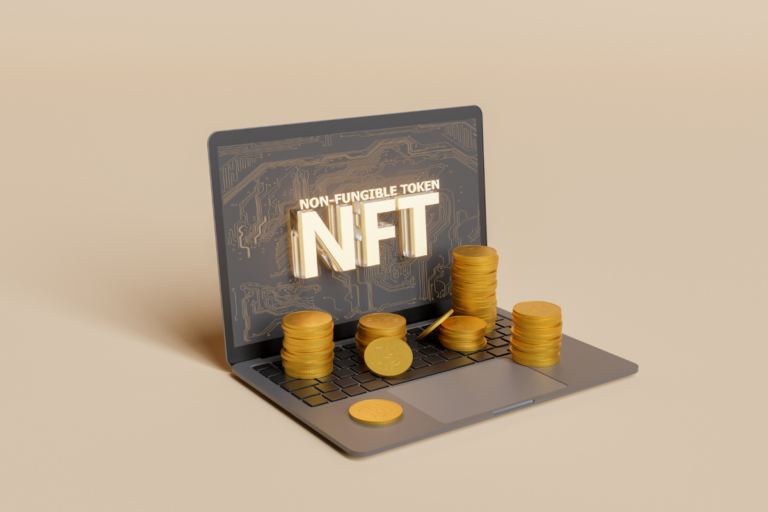NFT flipping has become a popular way to make money in the digital world. It involves buying non-fungible tokens (NFTs) at a lower price and selling them later at a higher price. If done correctly, it can be highly profitable.
However, like any investment, it requires research, patience, and the right strategy. This guide will walk you through everything you need to know about NFT flipping, from understanding NFTs to choosing the right ones and selling them for profit.
What Are NFTs?
NFTs, or non-fungible tokens, are unique digital assets stored on a blockchain. Unlike cryptocurrencies like Bitcoin or Ethereum, which are interchangeable, NFTs are one-of-a-kind and cannot be replaced.
They can represent digital art, music, videos, virtual real estate, gaming items, and more. Each NFT has a distinct value, making it different from regular digital files.
How Does NFT Flipping Work?
NFT flipping is similar to trading stocks or real estate. The goal is to buy an NFT when it is undervalued or when it has strong potential, then sell it later for a higher price. The key to successful NFT flipping is identifying valuable NFTs before they become widely popular.
Steps to Flip NFTs for Profit
1. Research the Market
Before buying any NFT, you need to study the market. Look at popular NFT collections, trends, and upcoming projects. Some platforms to explore include OpenSea, Rarible, SuperRare, and Foundation. Join NFT communities on Twitter, Discord, and Reddit to stay updated on market movements and find new opportunities.
2. Choose the Right NFT
Not all NFTs are valuable, so choosing the right one is crucial. Consider the following factors:
- Artist or Creator: Well-known creators or brands usually have NFTs with high demand.
- Rarity: Limited edition NFTs tend to be more valuable.
- Utility: Some NFTs come with additional benefits like exclusive memberships, access to events, or in-game assets.
- Community and Popularity: NFTs with a strong following are more likely to increase in value.
- Roadmap and Development: Check if the project has a clear vision for the future.
3. Buy at the Right Price
Purchasing an NFT at a reasonable price is essential. Look for new projects that have not yet gained mainstream attention but have strong potential. Sometimes, NFT floor prices (the lowest price available for an NFT in a collection) drop during bear markets, making it a good time to buy.
4. Hold or Sell?
Once you own an NFT, you need to decide when to sell. Some strategies include:
- Short-Term Flipping: Buying an NFT and selling it quickly when demand increases.
- Long-Term Holding (HODL): Keeping an NFT for months or even years, hoping its value will rise significantly.
- Selling in a Hype Cycle: Selling during market booms when people are willing to pay more.
5. Sell on the Right Platform
NFTs can be sold on various marketplaces. Choose a platform with high traffic and low transaction fees. Some popular options include:
- OpenSea: The largest NFT marketplace with a wide range of collections.
- Rarible: A decentralized marketplace where creators can mint their NFTs.
- SuperRare: Focuses on high-quality, rare digital art.
- LooksRare: Offers rewards for buying and selling NFTs.
6. Market Your NFT
To sell your NFT at a higher price, you need to promote it. Share it on social media platforms like Twitter, Instagram, and Discord. Engaging with NFT communities and influencers can help increase visibility.
7. Monitor Gas Fees and Transaction Costs
Ethereum-based NFTs require gas fees for transactions. Gas fees vary depending on network congestion, so it’s best to buy and sell when fees are low to maximize profit.
8. Stay Updated and Keep Learning
The NFT market is constantly changing. Keep learning by following NFT news, joining forums, and experimenting with different flipping strategies. The more knowledge you gain, the better your chances of success.
Risks of NFT Flipping
Like any investment, NFT flipping comes with risks. Some challenges include:
- Market Volatility: NFT prices can rise and fall unpredictably.
- Scams and Fraud: Many fake projects and rug pulls exist in the NFT space.
- Liquidity Issues: Some NFTs may not sell quickly, leaving you stuck with an asset that doesn’t appreciate in value.
- Regulatory Uncertainty: Governments may introduce new regulations that impact NFT trading.
Conclusion
NFT flipping can be a profitable venture if done with proper research and strategy. It requires patience, market awareness, and the ability to take calculated risks.
By following the steps in this guide, you can increase your chances of making money in the world of NFTs. Always stay informed, avoid impulsive decisions, and be mindful of potential risks. Happy flipping!
Join Gen z and millennials TaskForce official 2025 WhatsApp Channel To Stay Updated On time the ongoing situation https://whatsapp.com/channel/0029VaWT5gSGufImU8R0DO30


